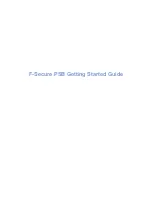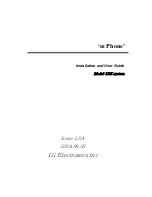
AT-S80 Management Software User’s Guide
Section I: Using the Menus Interface
101
Tagged VLAN Overview
The second type of VLAN supported by the AT-S80 management software
is the
tagged VLAN
. VLAN membership in a tagged VLAN is determined
by information within the frames that are received on a port and the VLAN
configuration of each port.
The VLAN information within an Ethernet frame is referred to as a
tag
or
tagged header
. A tag, which follows the source and destination addresses
in a frame, contains the Group ID of the VLAN to which the frame belongs
(IEEE 802.3ac standard). This number uniquely identifies each VLAN in a
network.
When a switch receives a frame with a VLAN tag, referred to as a
tagged
frame
, the switch forwards the frame only to those ports whose Group ID
equals the VLAN tag.
A port to receive or transmit tagged frames is referred to as a
tagged port
.
Any network device connected to a tagged port must be IEEE 802.1Q-
compliant. This is the standard that outlines the requirements and
standards for tagging. The device must be able to process the tagged
information on received frames and add tagged information to transmitted
frames.
The parts of a tagged VLAN are:
VLAN Name
Group ID
Tagged and Untagged Ports
Port VLAN identifier (PVID)
Tagged and
Untagged Ports
When you specify that a port is a member of a tagged VLAN, you need to
specify that it is tagged or untagged. You can have a combination of
tagged and untagged ports in the same VLAN.
Packet transmission from a tagged port differs from packet transmission
from an untagged port. When a packet is transmitted from a tagged port,
the tagged information within the packet is maintained when it is
transmitted to the next network device. If the packet is transmitted from an
untagged port, the VLAN tag information is removed from the packet
before it is transmitted to the next network device.
Summary of Contents for AT-S80
Page 8: ...Contents 8 Appendix A AT S80 Software Default Settings 339 Index 343...
Page 12: ...Tables 12...
Page 24: ...24 Section I Using the Menus Interface...
Page 30: ...Chapter 2 Getting Started with the Menus Interface 30 Section I Using the Menus Interface...
Page 60: ...Chapter 4 Port Configuration 60 Section I Using the Menus Interface...
Page 78: ...Chapter 6 IGMP Snooping 78 Section I Using the Menus Interface...
Page 84: ...Chapter 7 Static Multicast Address 84 Section I Using the Menus Interface...
Page 90: ...Chapter 8 Port Mirroring 90 Section I Using the Menus Interface...
Page 96: ...Chapter 9 Dial in User Configuration 96 Section I Using the Menus Interface...
Page 118: ...Chapter 10 Virtual LANs 118 Section I Using the Menus Interface...
Page 170: ...Chapter 13 Rapid Spanning Tree Protocol RSTP 170 Section II Menus Interface...
Page 176: ...Chapter 14 Bandwidth Control 176 Section I Using the Menus Interface...
Page 206: ...Chapter 18 RADIUS Authentication Protocol 206 Section I Using the Menus Interface...
Page 212: ...212 Section II Using the Web Browser Interface...
Page 250: ...Chapter 23 Port Trunking 250 Section II Using the Web Browser Interface...
Page 254: ...Chapter 24 Port Mirroring 254 Section II Using the Web Browser Interface...
Page 260: ...Chapter 25 Static Multicast Address Table 260 Section II Using the Web Browser Interface...
Page 264: ...Chapter 26 IGMP Snooping 264 Section II Using the Web Browser Interface...
Page 272: ...Chapter 28 Bandwidth Control 272 Section II Using the Web Browser Interface...
Page 284: ...Chapter 29 Virtual LANs 284 Section II Using the Web Browser Interface...
Page 328: ...Chapter 36 Management Software Updates 328 Section II Using the Web Browser Interface...
Page 342: ...Appendix A AT S80 Software Default Settings 342...
Page 346: ...Index 346...
















































